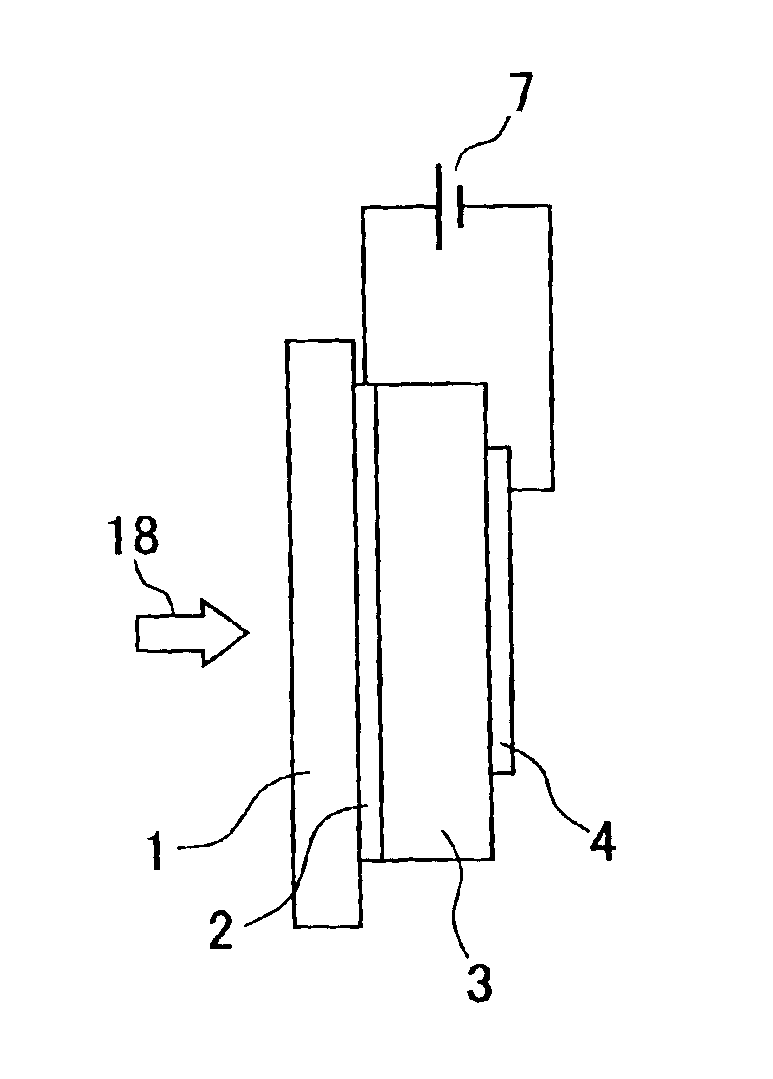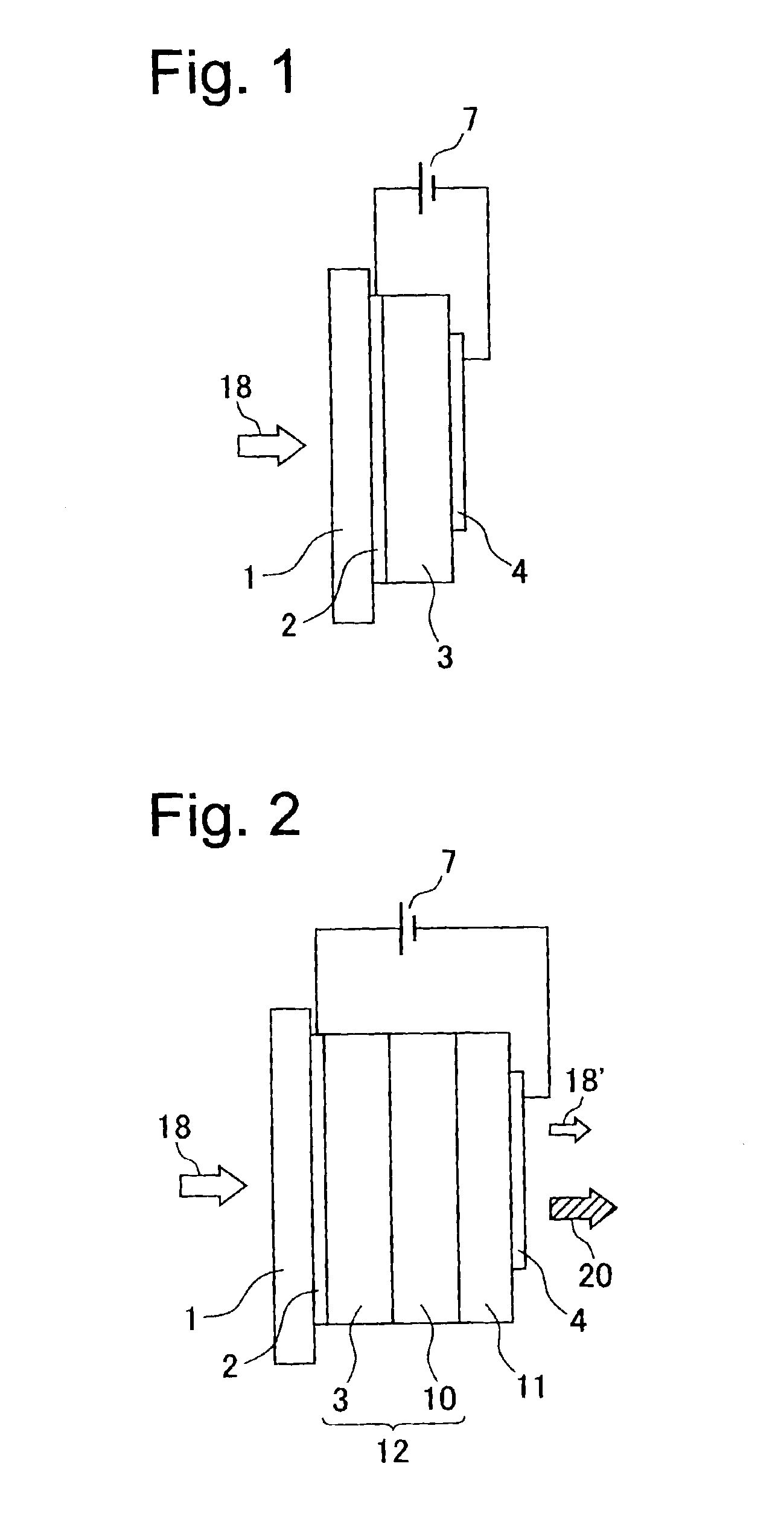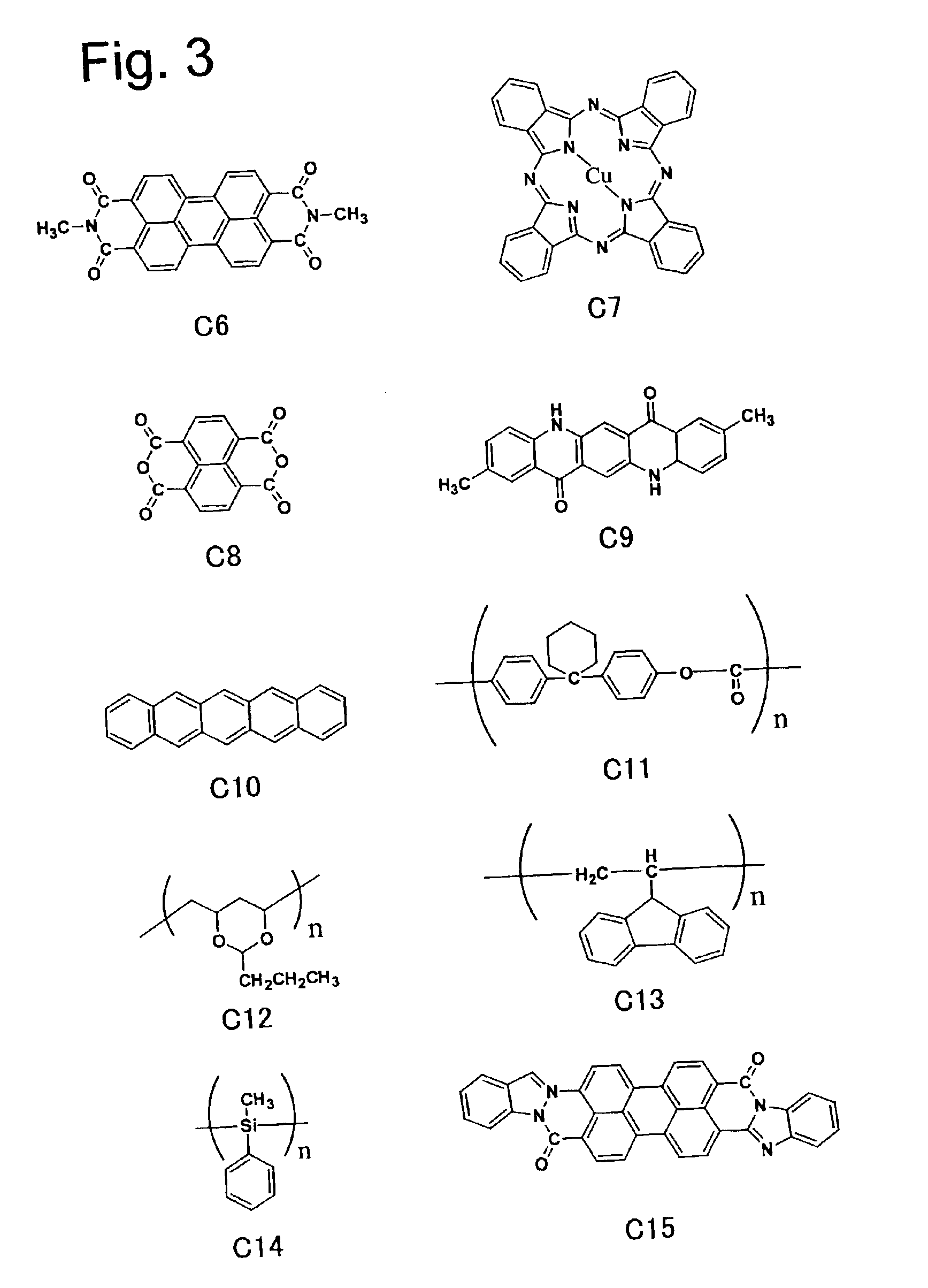Multiplication device comprising resin-dispersed organic semiconductor film and method for producing the same
a technology of organic semiconductor film and multiplication device, which is applied in thermoelectric devices, sustainable manufacturing/processing, and final product manufacturing, etc., can solve the problems of difficult to increase the area, increase the probability of conduction between the upper and lower electrodes, etc., and achieve the effect of easy production
- Summary
- Abstract
- Description
- Claims
- Application Information
AI Technical Summary
Benefits of technology
Problems solved by technology
Method used
Image
Examples
first embodiment
(First Embodiment)
FIG. 5 shows an embodiment of the photocurrent multiplication device of the present invention schematically illustrated in FIG. 1 applied as a laboratory model. The electrode 2 serves as the lower electrode formed on the glass substrate 1 for applying a voltage to the resin-dispersed organic semiconductor layer 3. An ITO transparent electrode (thickness: about 0.05 μm) was used as the lower electrode 2. The resin-dispersed organic semiconductor layer 3 in which a photoconductive organic semiconductor is dispersed in a resin is formed on the glass substrate 1 covering the lower electrode 2. The electrode 4 serves as the upper electrode formed on the resin-dispersed organic semiconductor layer 3, and is made of a gold evaporated film having a thickness of about 0.02 μm. The upper electrode 4 is composed of a plurality of pieces placed apart from one another so as to enable measurement of the photocurrent at different places because this embodiment is a laboratory mod...
second embodiment
(Second Embodiment)
In Second Embodiment, the present invention is applied to a light-light conversion device, of which construction is shown in FIG. 2.
The lower electrode 2 is an ITO transparent electrode formed on the glass substrate 1. The resin-dispersed organic semiconductor layer 3 as the photocurrent multiplication layer is made of Im-perylene pigment dispersed in polycarbonate at a dispersion concentration of 50%. The thickness of the layer is 0.5 μm. As the organic electroluminescent layer 10 formed integrally on the resin-dispersed organic semiconductor layer 3, used was an evaporated film of an aluminum-quinolinol complex (Alq3) shown as chemical formula C12 in FIG. 4. As the hole transport layer 11 provided between the resin-dispersed organic semiconductor layer 3 and the upper electrode 4, used was an evaporated film of a triphenyl-diamine derivative (TPD) shown as chemical formula C13 in FIG. 4. As the upper electrode 4, a gold evaporated film was used.
FIG. 9 shows the ...
PUM
| Property | Measurement | Unit |
|---|---|---|
| Electrical conductor | aaaaa | aaaaa |
| Electric potential / voltage | aaaaa | aaaaa |
| Photoconductivity | aaaaa | aaaaa |
Abstract
Description
Claims
Application Information
 Login to View More
Login to View More - R&D
- Intellectual Property
- Life Sciences
- Materials
- Tech Scout
- Unparalleled Data Quality
- Higher Quality Content
- 60% Fewer Hallucinations
Browse by: Latest US Patents, China's latest patents, Technical Efficacy Thesaurus, Application Domain, Technology Topic, Popular Technical Reports.
© 2025 PatSnap. All rights reserved.Legal|Privacy policy|Modern Slavery Act Transparency Statement|Sitemap|About US| Contact US: help@patsnap.com



